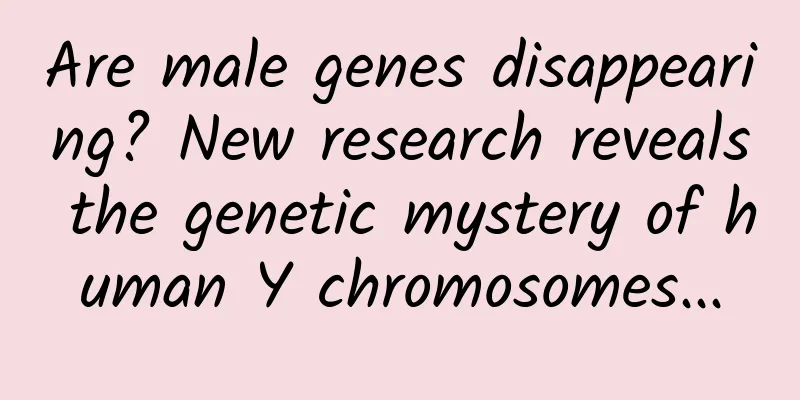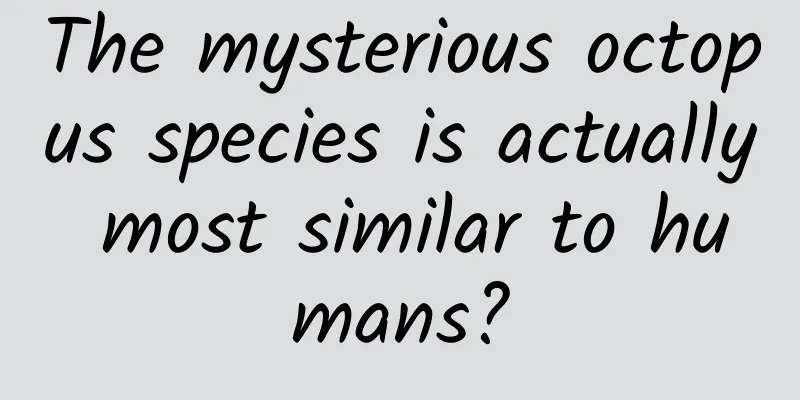Are male genes disappearing? New research reveals the genetic mystery of human Y chromosomes...

|
The Y chromosome is the true root of a man because it carries the genes that determine male characteristics and are used to produce sperm. The Y chromosome is small and looks very strange. It carries very few genes and is full of reverse and repetitive DNA fragments, which makes sequencing very difficult - comprehensive sequencing of the Y chromosome was once considered an impossible task. However, recently, the latest "long-read" sequencing technology has finally revealed the complete genetic information throughout the entire Y chromosome, and has achieved comprehensive and reliable sequencing of dozens of Y chromosomes from men around the world. This difficult and groundbreaking work was published in the journal Nature in August this year. Colleagues said it will guide us to explore the mechanism of action of sex genes and sperm genes, understand the evolution of the Y chromosome, and analyze whether it will disappear within millions of years as predicted. SRY guides men to grow up We have known for about sixty years that a particular chromosome determines the sex of humans and other mammals at birth. Females have a pair of X chromosomes, while males have an X chromosome and a much smaller Y chromosome. The Y chromosome determines male sex because it carries a gene called SRY, which directs the embryo's inner cellular ridge to develop into testes. The embryonic testes produce male hormones, which in turn direct the development of male characteristics in male babies. XX embryos lack the Y chromosome and the SRY gene, so the same ridge of cells develops into the ovary. Estrogen then induces the development of female characteristics in the baby girl. Is the Y chromosome a DNA garbage dump? As mentioned earlier, the Y chromosome is quite unique compared to the X chromosome and the other 22 autosomes. It is very small and carries very few genes - only 27 genes, compared to the approximately 1,000 genes on the X chromosome. The Y chromosome genes include SRY, a handful of genes that direct sperm production, and a number of genes that appear to be essential for life—many of which have counterparts on the X chromosome. Many Y-transgenic genes (including the sperm genes RBMY and DAZ) exist in multiple copies. In addition, as mentioned above, DNA sequence inversions and deletions are common. The Y chromosome also has many DNA sequences that do not appear to contribute to biological traits. This "junk DNA" consists of highly repetitive sequences that originate from fragments of old viruses, dead genes, and simple repeats of bases. Large repeating sequences of bases make up much of the Y chromosome; they can bind to fluorescent dyes, allowing you to see them under a microscope. Y is weird Why is the Y chromosome so unique? The story begins with evolution. There is overwhelming evidence that 150 million years ago, X and Y were just a pair of ordinary chromosomes (as they still are in birds and platypuses), indistinguishable from each other, one provided by each parent - just like the autosomes. Later, the SRY gene on this pair of chromosomes evolved, defining a new proto-Y chromosome (proto-Y). By definition, this proto-Y chromosome is forever confined to the testes and undergoes a series of mutations due to numerous cell divisions and very little repair. The original Y chromosome decayed rapidly, losing about 10 active genes every million years, from 1,000 to its current number of just 27. A small "pseudoautosomal" region at one end of it has retained its original form, identical to the X chromosome. There is much debate about whether this decline will continue, since at this rate Y-transfection would disappear in all humans within a few million years (as it has already happened to rodents). Technological upgrades drive sequencing breakthroughs The first draft of the human genome was completed in 1999. Since then, scientists have successfully sequenced all autosomes as well as the X chromosome (with only a few missing chromosomes). They did this using a technique called short-read sequencing, which involves cutting the DNA into small fragments of about a hundred bases each and then reassembling them like a jigsaw puzzle. The Y chromosome is much smaller than the X chromosome Of course, only recently have new technologies made it possible to sequence bases along a single long DNA molecule, producing long reads of thousands of bases. These longer reads are easier to distinguish and therefore easier to assemble. As a result, scientists have been able to resolve the puzzling repeats and loops on the Y chromosome. Y dye changes In March this year, Adam Phillippy, a bioinformatician at the National Human Genome Research Institute, and the Telomere to Telomere Consortium (T2T) reported the complete sequencing of the human genome except for chromosome Y. At that time, the T2T Consortium stated on social media that they had mastered the Y chromosome sequence. Now, as they report in a new article published in Nature, the complex arrangement of 62 million bases of the Y chromosome has been fully resolved, replacing 30 million bases of information that were missing in some previous sequencing efforts. Philip and others not only published an article in Nature, but also another work published at the same time, which sequenced 43 Y chromosomes of men from 21 different groups around the world, aiming to sample human genetic variation. After sequencing 43 Y chromosomes, the research team found that they were very genetically different. Charles Lee, one of the team members, said: I was surprised by the differences in the number of copies of certain genes on chromosome Y. For example, male A's Y chromosome had 23 copies of a gene called TSPY, which is thought to be involved in spermatogenesis, while male B's Y chromosome had 39 copies of TSPY. In addition, they found differences in the size and composition of the heavily repeated regions of the Y chromosome. The figure above shows that the size of the Y chromosome varies greatly among different individuals. Geneticist Mark Jobling (who was not involved in the work) noted that the organization and conservation of the DNA on the Y chromosome suggest that it has not degenerated to the point of extinction. “This paper demonstrates that the genetic content of the Y chromosome is essentially conserved, and that completely undermines the idea that the Y chromosome is still degenerating and destined for extinction.” It is not yet clear whether these variants affect male fertility or other characteristics. But knowing they exist lays the foundation for our follow-up research. Researchers can now conduct large-scale studies to explore the correlation between Y chromosome variants and health problems, such as bladder cancer, which is related to the Y chromosome. References [1]The 'weird' male Y chromosome has finally been fully sequenced. Can we now understand how it works, and how it evolved? Planning and production Source | World Science Compiled by | BiPu Star Editor | Yang Yaping |
<<: Today is a festival you would never expect!
>>: National Love Teeth Day | This is a serious "dental registration guide"!
Recommend
The mosquito that was flattened on the wall turned out to be an "eyewitness"!
I thought God didn't know. After stealing som...
Can't stop the price increase? A brief analysis of the reasons behind the SSD price increase
In recent times, the biggest news in the SSD mark...
How to find the reasons for decreased conversion by splitting “user active status”?
“Why has the conversion rate decreased? I can’t f...
Attracting new users: 4 tips to increase the sharing rate of old users bringing in new users
How to increase the frequency of referral sharing...
20 niche treasure APPs, work and life are not affected, grow quietly in 5 minutes every day
Today I will share with you 20 niche treasure APP...
Eight "pitfalls" that smart hardware startups need to avoid
[[149373]] 1. Intelligence for the sake of intell...
For these dragons, having a tail that's too big is also a problem...
When it comes to the largest animal on land today...
What happens when a black hole passes close to the Earth?
Imagine if there is a celestial body whose gravit...
Jobs' Fence
[[136824]] How did Jobs develop his pursuit of su...
Feng Xueying's baby massage class
Feng Xueying's baby massage course resources ...
The 4 elements of event planning and event format design!
I am here again to share with you the knowledge o...
Douyin short video sales tutorial, earning 100,000 yuan a month is not a legend
Douyin short video sales tutorial, earning 100,00...
Dam Knowledge | Xiaolangdi: Turbulent waves appear in a calm lake, and there is no flooded beach for thousands of miles
When talking about water and sediment regulation ...
A card collection activity aimed at attracting new customers!
I believe everyone is familiar with the card coll...
The duck meat I bought was shiny? Was it because I was starving, or was it because the duck had become a spirit?
"A beautiful day is coming to an end. Tomorr...









